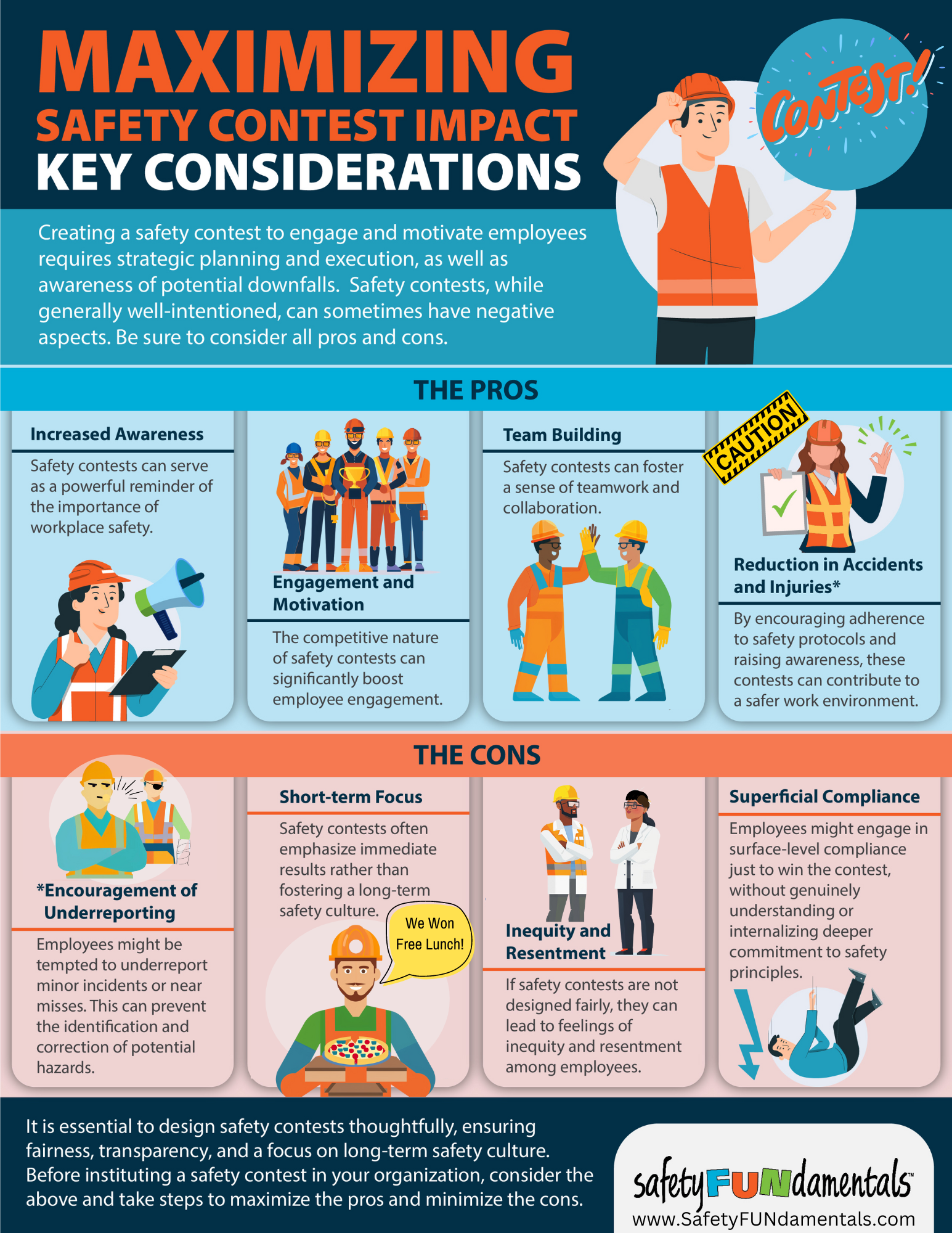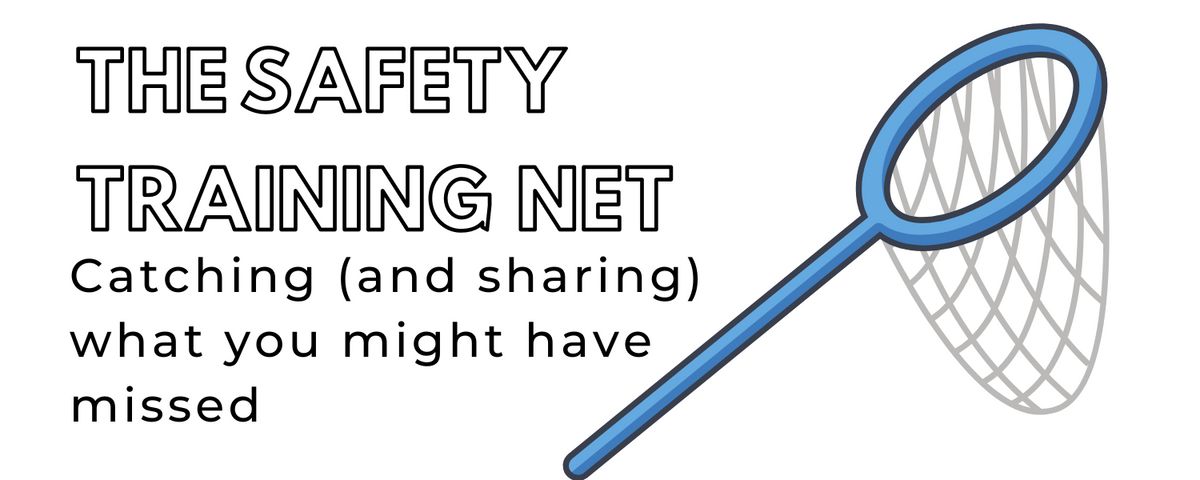Maximizing Safety Contest Impact

Safety Contests
Creating a safety contest to engage and motivate employees requires strategic planning and execution, as well as awareness of potential downfalls. Safety contests, while generally well-intentioned, can sometimes have negative aspects. Be sure to consider all pros and cons as shown in the above infographic.
The Pros
1. Increased Awareness
Safety contests can serve as a powerful reminder of the importance of workplace safety. By participating in these contests, employees become more aware of safety protocols and procedures, leading to a more safety-conscious work environment. This heightened awareness can be instrumental in preventing accidents and injuries.
2. Engagement and Motivation
The competitive nature of safety contests can significantly boost employee engagement. When rewards and recognition are at stake, employees are more likely to be motivated to follow safety protocols diligently. This motivation can translate into safer workplace behaviors and a more proactive approach to identifying and addressing potential hazards.
3. Team Building
Safety contests can foster a sense of teamwork and collaboration. Employees working together towards a common safety goal can improve communication and build stronger relationships. This teamwork enhances the overall safety culture and contributes to a more cohesive and supportive work environment.
4. Identification of Best Practices
Employees often share and discover best practices for maintaining safety through participation in safety contests. These contests can highlight effective safety strategies and procedures, which can be adopted across the organization. This collective learning process can lead to continuous improvement in workplace safety.
5. Reduction in Accidents and Injuries
Safety contests' most tangible benefits are the potential reduction in workplace accidents and injuries. By encouraging adherence to safety protocols and raising awareness, these contests can contribute to a safer work environment. The positive impact on employee well-being and the reduction in lost workdays can also result in cost savings for the company.
The Cons of Safety Contests
1. Encouragement of Underreporting
In the quest to win safety contests, employees might be tempted to underreport minor incidents or near misses. This can create a misleading picture of the actual safety situation in the workplace. Underreporting prevents identifying and correcting potential hazards, ultimately undermining the goal of improving safety.
2. Short-term Focus
Safety contests often emphasize immediate results rather than fostering a long-term safety culture. While employees may follow safety protocols strictly during the contest period, there is a risk that these behaviors may not be sustained once the contest ends. A lasting commitment to safety requires ongoing effort beyond the duration of a contest.
3. Inequity and Resentment
If safety contests are not designed fairly, they can lead to feelings of inequity and resentment among employees. If only certain individuals or teams are consistently rewarded, others may feel left out or undervalued. It is crucial to ensure that the rules and criteria for winning are equitable to avoid such issues.
4. Pressure and Stress
The competitive nature of safety contests can create pressure and stress for employees. The desire to win can lead to anxiety and burnout, which paradoxically increases the risk of accidents. It is important to balance competition with a supportive environment prioritizing employee well-being.
5. Superficial Compliance
Employees might engage in surface-level compliance with safety rules to win the contest without genuinely understanding or internalizing the importance of those rules. This superficial compliance can be counterproductive if it does not lead to a deeper commitment to safety principles.
Safety contests can be a double-edged sword. While they have the potential to increase awareness, motivate employees, foster teamwork, identify best practices, and reduce accidents, they also come with risks such as underreporting, short-term focus, inequity, stress, and superficial compliance. To maximize the benefits and minimize the drawbacks, it is essential to design safety contests thoughtfully, ensuring fairness, transparency, and a focus on long-term safety culture. By doing so, employers can create a safer and more engaged workplace for everyone.
To download this infographic, click here.

Leave a comment
Comments will be approved before showing up.




